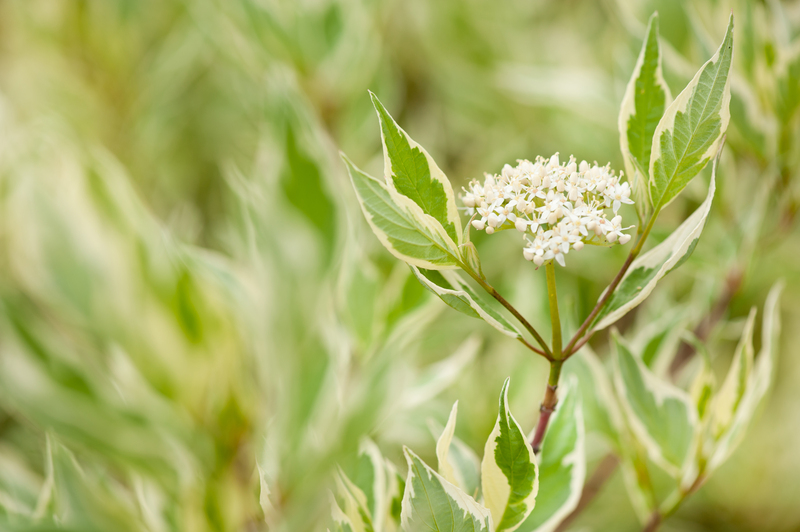Developing a Garden Oasis for Children to Enjoy
Posted on 30/06/2025
Developing a Garden Oasis for Children to Enjoy: A Comprehensive Guide
Creating a captivating and enriching outdoor environment is a wonderful gift to children. Developing a garden oasis for children to enjoy can foster imagination, learning, and a deep connection with nature. This comprehensive guide explores creative ideas, essential tips, and practical steps to transform your outdoor space into a magical haven for kids. Whether you have a sprawling backyard or a modest urban area, a kid-friendly garden oasis can spark wonder, adventure, and endless memories for your family.

Why Build a Kids' Garden Oasis?
Childhood is rooted in exploration and discovery. Crafting a children's paradise outdoors invites physical activity, creativity, and sensory stimulation in ways that screens simply cannot. Here's why garden spaces for kids are vital:
- Physical Development: Active play in gardens builds strength, coordination, and gross motor skills.
- Mental Well-Being: Green spaces reduce stress and anxiety, boosting mood and emotional health.
- Curiosity & Learning: Gardens inspire questions about nature, plants, insects, and the environment.
- Responsibility & Pride: Tending a garden instills care, patience, and a sense of accomplishment.
- Family Bonding: Gardening together encourages teamwork, communication, and shared joy.
Choose the Right Location for Your Garden Oasis
Identifying the perfect spot is crucial for designing a child-friendly outdoor retreat. Consider these factors when selecting your location:
- Visibility: Choose an area visible from your home for supervision and easy access.
- Safety: Avoid spots near pools, thorns, or toxic plants. Ensure boundaries are clear.
- Sunlight & Shade: Balance sun-loving plant sections with shaded areas for hot days.
- Space: Even small patios or balconies can become lush, inviting retreats.
Designing a Magical and Safe Children's Garden
Every garden oasis starts with a plan. Designing a playful environment for young ones means blending fun, safety, and aesthetics. Here are guiding principles:
- Soft Surfaces: Use grass, mulch, or play-safe mats to soften falls and barefoot adventures.
- Chemical-Free: Opt for organic gardening--avoid pesticides and herbicides.
- Child-Scale Features: Create paths, tunnels, and beds suitable for little hands and feet.
- Curved Paths: Winding trails encourage curiosity and imaginative journeys.
- Fencing & Gates: Secure the area to keep children safe and contained.
Key Elements of a Kid-Centric Garden Oasis
1. Sensory Delights: Engage Every Sense
A successful children's garden oasis should stimulate sight, touch, scent, sound, and even taste.
- Colors: Plant vibrant flowers like marigolds, zinnias, and sunflowers.
- Textures: Include lamb's ear, fountain grass, or soft moss patches for tactile play.
- Scents: Grow fragrant herbs (lavender, mint) and blooms for aromatic exploration.
- Sounds: Add wind chimes, rustling grasses, or bird feeders for auditory surprises.
- Flavors: Select edible plants such as strawberries, cherry tomatoes, and peas to nibble straight from the vine.
2. Interactive Zones: Areas for Exploration & Play
- Mud Kitchen Area: Set up a simple station with bowls, spoons, and old pans for messy, creative play.
- Hidden Hideaways: Build a teepee with bamboo poles and climbing vines, or tuck a reading nook among shrubs.
- Discovery Paths: Lay stepping stones or log rounds through the landscape, inviting adventure.
- Sandbox or Digging Beds: Encourage tactile and imaginative play with designated digging spots.
- Balance and Climbing Structures: Add logs, stumps, or safe climbing frames for gross motor fun.
3. Safe Water Features
Children are mesmerized by water. Consider safe features to incorporate:
- Bird Baths: Attract feathered friends and spark conversations about wildlife.
- Mist Sprayers: Cool and refresh without the hazards of deep water.
- Pebble Streams: Create dry riverbeds with smooth stones for tactile and visual interest.
- Mini Ponds: If desired, opt for shallow, covered ponds or water tables -- always supervise closely.
4. Edible Gardens: Grow, Taste, Learn
A child-friendly garden packed with eatable delights is educational and rewarding. Guide your kids to plant, tend, and harvest their own crops.
- Fast-Growing Vegetables: Radishes, lettuce, and beans give quick results to keep kids excited.
- Small Fruits: Strawberries, blueberries, and raspberries are fun to pick and eat.
- Herb Spiral: A raised, spiral-shaped bed filled with herbs is both beautiful and interactive.
- Sensory Edibles: Peppermint, lemon balm, and chives awaken taste and smell.
5. Art and Creativity Stations
Inspire self-expression by integrating art into the garden:
- Chalkboard Walls: Paint a fence panel or piece of wood with chalkboard paint.
- Fairy or Dinosaur Gardens: Miniature worlds that let imaginations run wild.
- Painting Rocks and Pots: Provide washable paints for customized garden decor.
Planning Your Garden Oasis: Steps to Success
Step 1: Involve Your Children in the Process
The best way to develop a garden oasis for children is to co-create. Ask your kids about their dreams, favorite colors, and must-have play features. Let them help choose plants, design paths, and name zones.
Step 2: Choose Age-Appropriate Features
Each age group will be drawn to different aspects of the garden:
- Toddlers: Soft surfaces, sensory plants, safe water play, and shady resting spots.
- Preschoolers: Sturdy building toys, easy-to-reach picking beds, and interactive features like mini greenhouses.
- Older Children: Climbing walls, DIY projects, treehouses, and themed hideouts.
Step 3: Prepare Your Soil and Groundwork
Healthy soil is fundamental for thriving plants and happy feet. Remove debris, enrich with compost, and address drainage. For play areas, use bark chips, pea gravel, or soft synthetic turf.
Step 4: Select Safe, Non-Toxic Plants
Research plant varieties to avoid those that are toxic to children or pets. Popular choices include:
- Sunflowers
- Snapdragons
- Marigolds
- Sweet peas (ornamental, not edible type)
- Nasturtiums
- Oleander
- Daffodil bulbs
- Foxglove
- Yew
- Castor bean
Step 5: Incorporate Nature and Wildlife
A captivating garden oasis for kids is a living ecosystem. Encourage biodiversity by:
- Planting native species to attract butterflies and bees.
- Adding bird houses and feeders.
- Building bug hotels or log piles for insects.
Step 6: Add Shade and Shelter Elements
Hot summer days need cooling refuges. Options include:
- Tall sunflowers or fast-growing bamboo for natural shade.
- Canvas awnings or pergolas for structured coverage.
- Play tents or miniature gazebos for whimsical retreats.
Step 7: Ensure Safety First
Before opening your garden oasis for children, check for:
- Sharp tools, debris, or splinters
- Allergy-inducing plants
- Secure fencing and self-latching gates
- Safe storage for chemicals and gardening equipment
Low-Maintenance Kids' Garden Features
Not everyone has endless time or energy for upkeep. Here are easy-to-maintain options:
- Native plants suited to local climate and soil need minimal fuss.
- Perennials return each year, reducing replanting chores.
- Automatic irrigation or self-watering planters save time.
- Mulched beds suppress weeds and retain moisture.
- Sturdy outdoor toys and weather-resistant structures last for years.
Creative Themes for Children's Gardens
Themed gardens elevate the sense of adventure and wonder. Consider these ideas for developing a garden oasis for kids:
- Butterfly and Bee Paradise: Pollinator-friendly flowers and a bug hotel attract fascinating visitors.
- Fairy Tale Garden: Miniature doors on tree trunks, fairy lights, and whimsical pathways spark delight.
- Dinosaur Dig Zone: Sandpits with buried "fossils" let little paleontologists uncover treasures.
- Pizza Garden: Grow tomatoes, basil, and peppers in a circular bed to use for homemade pizza night.
- Rainbow Vegetable Patch: Vibrant carrots, beets, and colored chard encourage healthy eating.
Encouraging Garden Learning and Exploration
Your garden oasis for children's enjoyment can be a living classroom. Inspire a lifelong love of learning with:
- Nature journals for recording observations and sketches.
- Scavenger hunts for leaves, insects, and natural treasures.
- Simple science experiments--test soil pH, create compost, or track plant growth.
- Storytime under a tree or in a garden nook, connecting books with nature themes.
Year-Round Enjoyment in the Garden Oasis
A well-designed family garden can inspire play in every season:
- Spring: Sow seeds, watch bulbs emerge, and create butterfly puddles.
- Summer: Water play, picnics, night-time stargazing, and building bug hotels.
- Autumn: Harvest vegetables, collect leaves, and plant spring bulbs.
- Winter: Make bird feeders, explore frost patterns, and enjoy evergreens.

Maintenance Tips for Kid-Friendly Gardens
- Weekly Inspections: Check for hazards or broken play equipment.
- Regular Weeding and Pruning: Keep paths clear for safe navigation.
- Update Elements: Swap activities or plants as children's interests evolve.
- Sanitize Water Play Areas: Keep bird baths and water tables clean to prevent mosquito breeding.
- Refresh Mulch Annually: Maintain soft, clean surfaces in play zones.
Conclusion: The Lasting Impact of a Children's Garden Oasis
Developing a garden oasis for children to enjoy requires creativity, care, and a dash of playfulness. This investment in your outdoor space will pay lasting dividends, nurturing little bodies, minds, and spirits. By infusing your garden with color, texture, mystery, and safe zones, you offer your children a precious space to grow not only as gardeners but as curious, joyful humans deeply connected to nature.
Start small or dream big--every step towards creating a magical garden oasis for your kids is a step towards a healthier, happier childhood. Let your imagination blossom and watch your garden--and your children--flourish.

